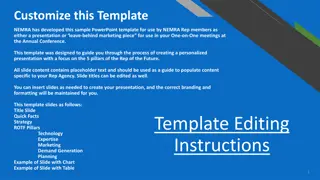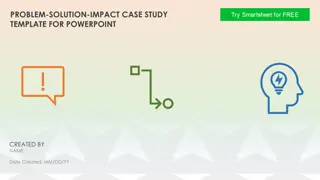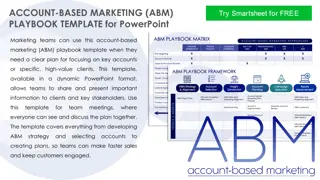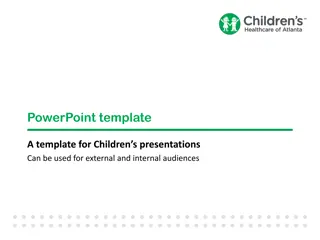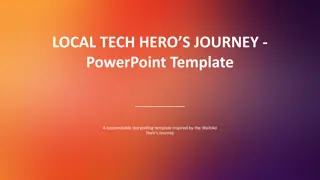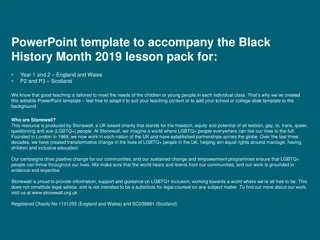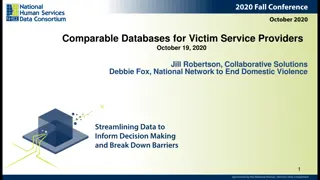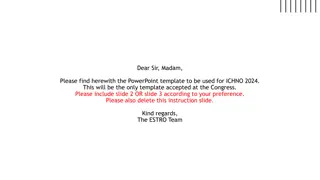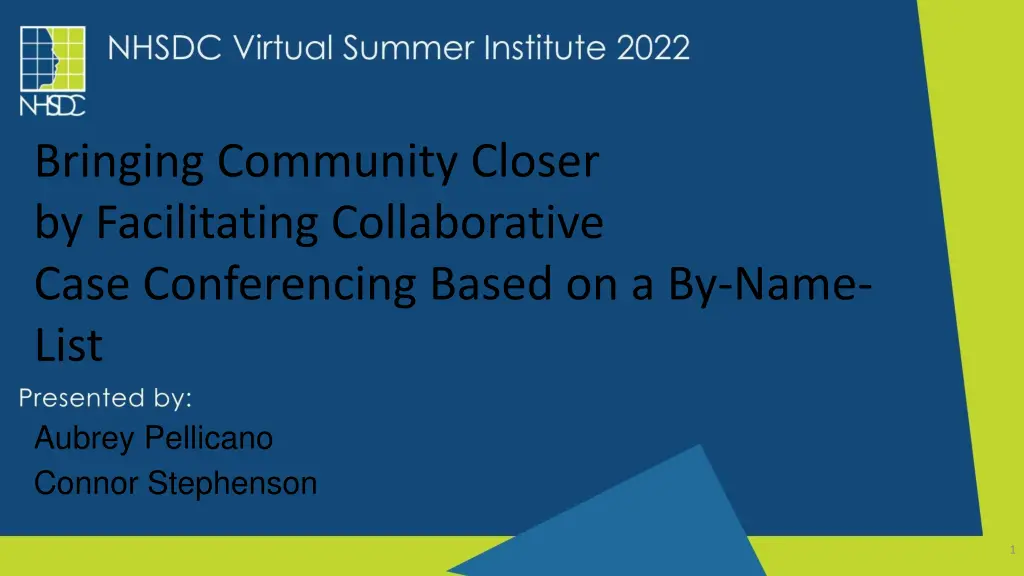
Facilitating Collaborative Case Conferencing for Community Support
Learn how a By-Name-List approach helps address homelessness issues effectively in Orange County, California. Explore the system, challenges, and solutions in providing support to individuals in need.
Download Presentation

Please find below an Image/Link to download the presentation.
The content on the website is provided AS IS for your information and personal use only. It may not be sold, licensed, or shared on other websites without obtaining consent from the author. If you encounter any issues during the download, it is possible that the publisher has removed the file from their server.
You are allowed to download the files provided on this website for personal or commercial use, subject to the condition that they are used lawfully. All files are the property of their respective owners.
The content on the website is provided AS IS for your information and personal use only. It may not be sold, licensed, or shared on other websites without obtaining consent from the author.
E N D
Presentation Transcript
Bringing Community Closer by Facilitating Collaborative Case Conferencing Based on a By-Name- List Aubrey Pellicano Connor Stephenson 1
Introductions Connor Stephenson (he/him/his) Individual Coordinated Entry System Manager Aubrey Pellicano (she/her/hers) Lead Data Associate
Where we work: Friendship Shelter Non-profit service provider operating since 1988 with programs encompassing Emergency shelter Permanent supportive housing Street Outreach Drop-in day services Housing disability advocacy Coordinated entry system administration All direct services provided in south service planning area
The system we work within: CA CoC 602 Orange County Population of 3.176 Million People 6,860 people experiencing homelessness (according to 2019 PIT) CoC is seated with the County of Orange Homelessness is seen as a politically divisive issue 211OC is the HMIS Lead Three service planning areas (North, Central, and South) Historically a very shelter-focused service system
Superhero Origin Story: By-Name-List "Every community talking about making progress toward functional zero says they are using a By-Name-List" But what the heck is a By-Name-List anyways?
Definition: By-Name-List A close-to-real-time, passively collected list of everyone experiencing homelessness in a region that can be utilized democratically through interagency efforts to make the transition from my clients to our clients, and aid in making homelessness rare, brief, and non- recurring.
Utilized democratically through interagency efforts All participating agencies signed MOUs Transition from my clients to our clients, Agency information is omitted Making homelessness rare, brief, and non-recurring. Housing-first and housing- focused case conferencing model Operationalizing the definition: Close-to-real-time, Biweekly meetings: Biweekly data pushes Passively collected 100% of data comes from HMIS List of everyone experiencing homelessness in a region Full outreach coverage of the region
The Data: Client Data Enrollment Data Enrollment ID Start Date Exit Date Head of Household Chronically Homeless at Current Date Residence Prior to Project Entry Approximate Date Homelessness Started City Custom What city were you in immediately prior to entry in this project? Exit Destination Disabling condition Chronic Health Developmental HIV/AIDS Mental Health Physical Substance Use Disorder Custom What city are you currently homeless in? Unique ID Personal ID Full Name DOB Ethnicity Gender Race Veteran Status Program Data Sites City Name Project Type Code Agency Data Agency Name
Definition: Collaborative case conferencing A targeted, action-oriented, and housing-focused problem-solving method rooted in the assumption that a coordinated and regional approach to resolving housing crises for individuals experiencing homelessness produces effective and efficient results. Note: although we are not a Built for Zero community, and our case conferencing model differs from Built for Zero's in substantial ways, we relied heavily on Built for Zero's Case Conferencing Tool Bank while designing our model
Emphases of Collaborative Case Conferencing: Targeted Focusing efforts on a single population Housing-Focused The sole intent of the intervention is to end participants' experience of homelessness Action-Oriented An action is assigned for each participant on the By-Name-List each week, and a system of transparency and accountability is in place to follow up on assigned actions
Targeted Subpopulation: People vulnerable to COVID-19 Over 65 years of age Experiencing chronic homelessness Reasoning Aligned with system goals Yielded a reasonable number of participants (approximately 40 at beginning of period) Housing improves health outcomes and reduces risk of virus transmission
Case Conferencing Housing Buckets: Engagement Assertively engage client to begin a housing conversation Assessment Assess client's housing needs and resources Housing Planning Develop and implement personalized housing plans Housing Navigation Assist the client in securing housing Housed The goal for every person
Housing Plans Once in the "housing planning" bucket, a housing plan is recorded for each participant In alignment with the housing-first principle of self-determination, housing plans are intended to be guided by the participant in the light of local circumstances and conditions Note: our updated model allows and encourages two housing plans to be recorded for each participant
Barriers (and Strengths) Barriers Though participants may experience many barriers, the goal is to record the barriers that most impede the participant from achieving their housing plan The goal is to frame barriers as being located in the system instead of in the participant (e.g. barrier is lack of accessible housing for people with substance use problems instead of barrier is substance use problem) This used to be a site of occasional conflict between meeting facilitator and case managers Strengths Original model collected only information on barriers, but new model collects both strengths and barriers
Action and More Action The focus of each meeting is to determine actions to be completed before the next meeting Each participant/case manager combo that is currently engaged will agree to an action at each meeting Sometimes inaction is an action The facilitator may reach out to case managers to follow-up on progress between meetings Actions from the last meeting carry over to the next for the facilitator to follow up on Yes, the action was completed: how did it go? What's next? No, the action was not completed: why not? Do we need to change course? Specific target dates are selected and setting nebulous timeframes of "before next meeting" is avoided at all costs Toward the end of housing navigation, each target date becomes a projected housing move-in date
Methodology Testing our Impact using Quasi Experimental Design South SPA vs. Central and North SPAs Age Groups within South SPA
Results Snapshot South SPA vs. Central and North SPAs South: 18/72 (25%) North: 44/218 (20%) Central: 42/177 (24%) Age Groups within South SPA 55-64: 37/143 (26%) 65 and up: 18/74 (24%)
SPA Characteristics South Central North 72 target population 510 2019 Individual PIT 672 served on BNL over reporting period 210 target population 2696 2019 Individual PIT 3028 served on BNL over reporting period 163 target population 2042 2019 Individual PIT 4069 served on BNL over reporting period
Data Analysis Export sent to us by CoC HMIS Lead 12/01/2020 - 12/31/2021 Calculating Chronic Homelessness at Point in Time 65 years old during enrollment
The data: About 20,000 records total (19,780) -- 8,195 people engaged Concatenated several datasets that had overlapping data 129 programs 78 that were kept in the final analysis Data Cleaning
Chronic Homelessness Disability long term chronic health, mental health, physical health, substance use, developmental, HIV/AIDS 5,535 people AND Chronicity 12 months homelessness consecutively OR 12 months over four or more times in the past three years 4,555 (56%) people CH
Housing Outcomes Exited program to a permanent housing destination
Population 65 and over + CH N = 467 Average age: 71 Time spent experiencing homelessness 87 months on average, 79 months for those housed
Veteran Status 45 (10%) Ethnicity Hispanic/Latinx: 89 (19%) Non-Hispanic/Non-Latino: 373 (80%) Gender Male: 271 (58%) Female: 194 (41%)
Chi-Square test What is it doing? Analyzing differences between groups using two categorical variables SPA and Housing Outcome Was the difference due to chance? p-value below alpha (.05) Below 5% probability that the results are due to chance
Chi-Square test 2 = .367 df = 1 p = .737
Chi-Square test Age Groups 2 = .062 df = 1 p = .826
Ad Hoc In total, 175/1195 (15%) were housed in South OC in time frame Those who were case conferenced: 15/63 (24%)
Limitations Data changed over time Returns to homelessness Comparison groups COVID Programs and Funding
Summary Although the statistical test was not significant, we feel that the housing rate in South SPA was meaningful. Future study could provide clarity by: Using random samples Using a more comparable population for "control group" Using larger samples Using a broader population
What does that mean for the folks that were case conferenced through our By-Name-List?
Success Stories: Tiffany Experiencing unsheltered homelessness since approximately 1986 Referred into shelter as an early success of the By-Name-List Remained sheltered for over two years Currently matched through CES with a CoC Certificate Enrolled in Medi-Cal housing navigation and stabilization program
Success Story 2: Bertha, Yuko, and Doug All got placed in nursing homes or assisted livings Used referral resources shared about during the meeting
Supp South BNL comparisons over time April, 2021 Overall: 318 Target population: 18 July, 2022 Overall: 402 Target population: 21

